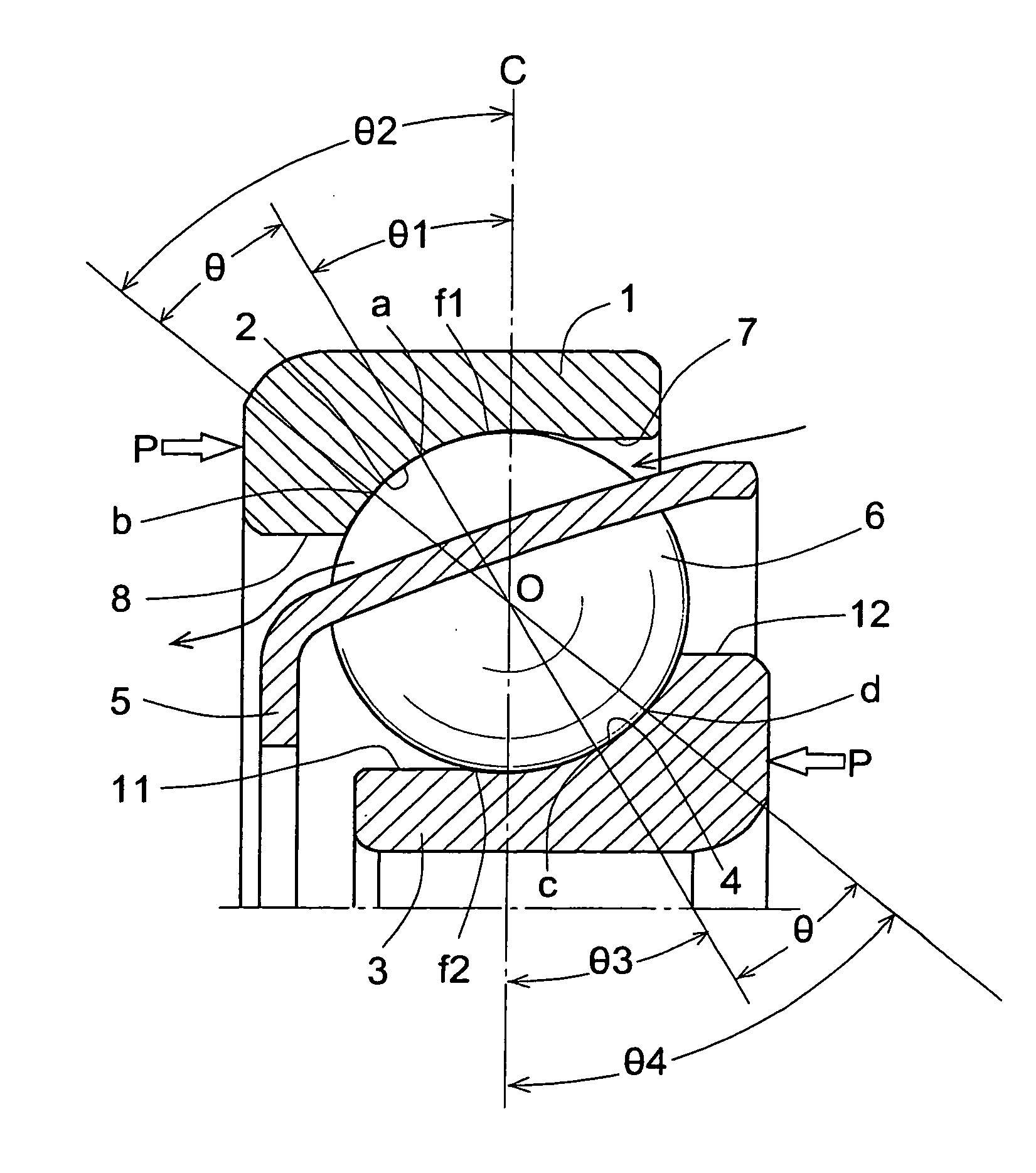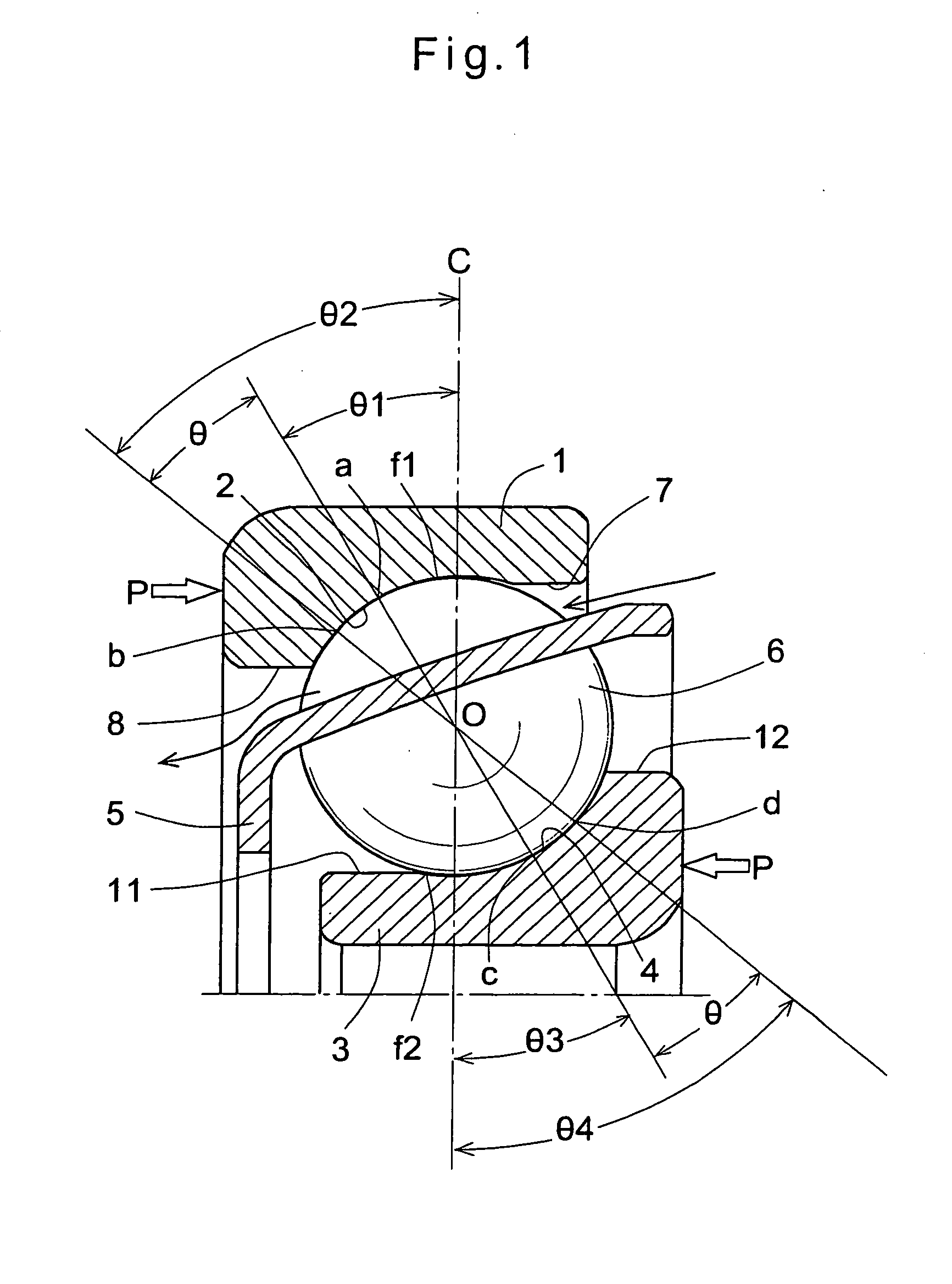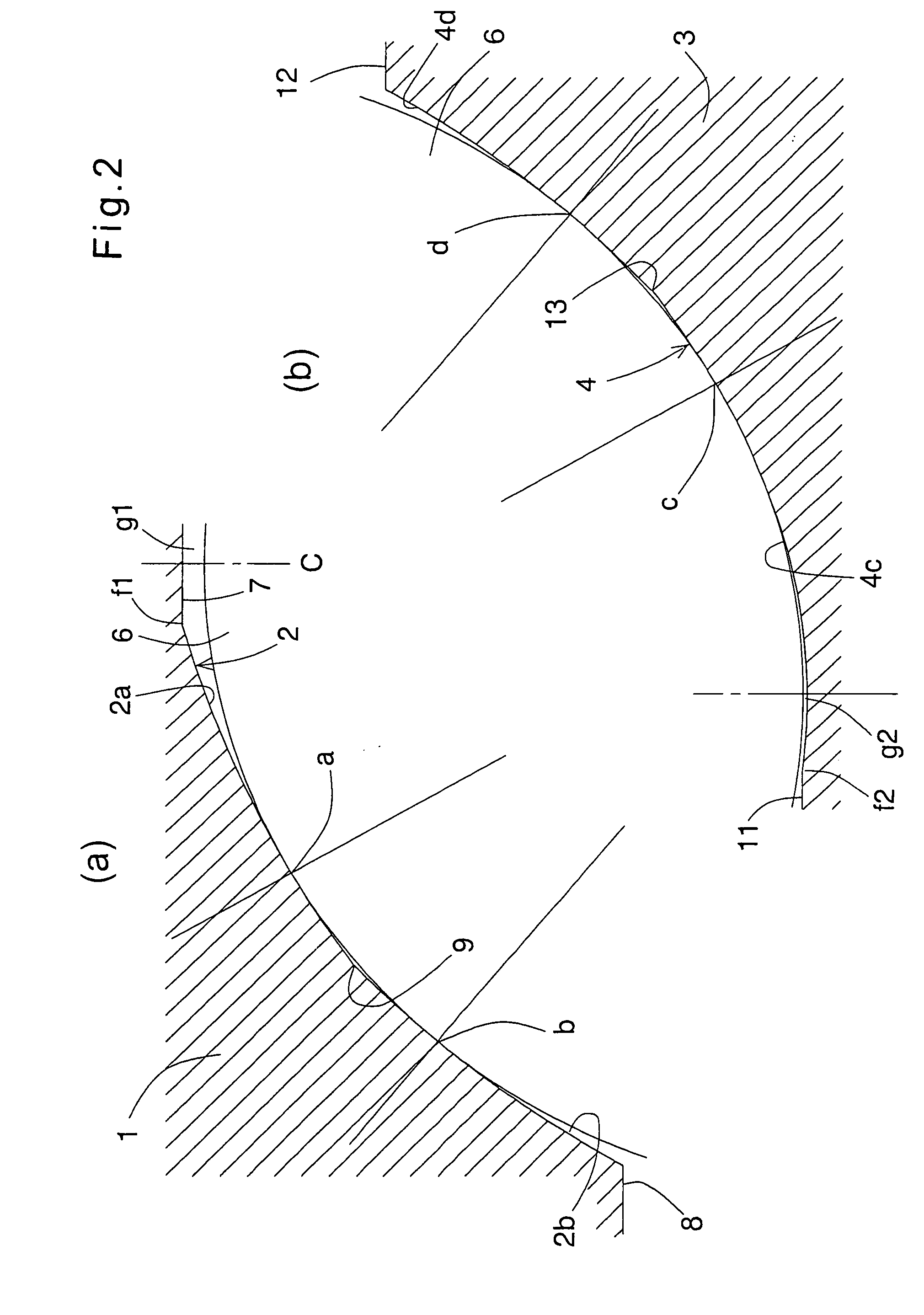Angular Contact Ball Bearing and Joint Assembly for a Robotic Arm
a robotic arm and ball bearing technology, applied in the field of angular contact ball bearings, can solve the problems of limiting the machining accuracy, ball wear and peeling, and complicated ball spin, so as to improve the wear resistance, and reduce the weight of the angular contact ball bearing
- Summary
- Abstract
- Description
- Claims
- Application Information
AI Technical Summary
Benefits of technology
Problems solved by technology
Method used
Image
Examples
third embodiment
[0117]Each ball 6 of either of the first and second arrays 15 and 16 is in contact with each of the raceways 2 and 4 at two points, with the values of θ1 and θ3 set at 15° and the values of θ2 and θ4 set at 45°. Thus, the nominal contact angles in the first and second arrays 15 and 16 are both 30°. This determines the nominal lines of action. Because the angular contact ball bearing is of the face-to-face duplex structure, the nominal lines of action of the first and second arrays 15 and 16 intersect each other inside the bearing.
[0118]Lubricating oil supplied into the space between the outer rings 1 flows along the counter portion 7 into the first and second arrays 15 and 16. This is because the retainers 5 are arcuately curved. According to the structures of the retainers and the housing and the use environment, oil circulation paths and the lubricating method can be determined.
[0119]The fourth embodiment for achieving the first object is now described. The angular contact ball b...
sixth embodiment
[0130]The main bearing 45 is the angular contact ball bearing which is of the back-to-back duplex structure. The main bearing 45 includes outer rings 49 fitted in the drum 46, and inner rings 50 fitted on the case 41. That is, the main bearing 45 is disposed between the output shaft of the speed reducer (which comprises the ring gear 47 and the drum 46) and the driving side. A preload is applied to the main bearing 45.
[0131]The inner and outer rings of the main bearing 45 are offset from each other by a distance h such that the shoulder 51 of each inner ring 50 is located axially outside the counter portion 52 of the corresponding outer ring 49. This arrangement increases the spaces between the shoulders 51 and the counter portions 52, so that lubricating oil can more smoothly flow into the bearing.
[0132]Because the main bearing 45 has improved rigidity compared to conventional such bearings as mentioned above, it is possible to correspondingly reduce the wall thickness of the drum...
seventh embodiment
[0133]Now referring to FIGS. 10 and 11, description is made of the seventh embodiment for achieving the second objection.
[0134]As shown in FIG. 10, this bearing is an angular contact ball bearing comprising an outer ring 1′ having a raceway 2′, an inner ring 3′ having a raceway 4′, balls 6′ disposed between the raceways 2′ and 4′, and a retainer 5′ spacing the balls 6′ from each other at predetermined intervals.
[0135]On the radially inner surface of the outer ring 1′, a large-diameter inner surface 7′ and a small-diameter inner surface 8′ are formed at both ends thereof. The raceway 2′, which is arcuate as a whole, is formed between the inner surfaces 7′ and 8′. As is apparent from FIG. 11(a), the raceway 2′ comprises two arch-shaped arcuate surfaces 2a′ and 2b′. Contact points a and b with each ball 6′ are formed on both sides of the abutment 9′ between the arcuate surfaces 2a′ and 2b′. In FIG. 10, the contact angle at the contact point a with respect to the bearing centerline C is...
PUM
 Login to View More
Login to View More Abstract
Description
Claims
Application Information
 Login to View More
Login to View More - R&D
- Intellectual Property
- Life Sciences
- Materials
- Tech Scout
- Unparalleled Data Quality
- Higher Quality Content
- 60% Fewer Hallucinations
Browse by: Latest US Patents, China's latest patents, Technical Efficacy Thesaurus, Application Domain, Technology Topic, Popular Technical Reports.
© 2025 PatSnap. All rights reserved.Legal|Privacy policy|Modern Slavery Act Transparency Statement|Sitemap|About US| Contact US: help@patsnap.com



